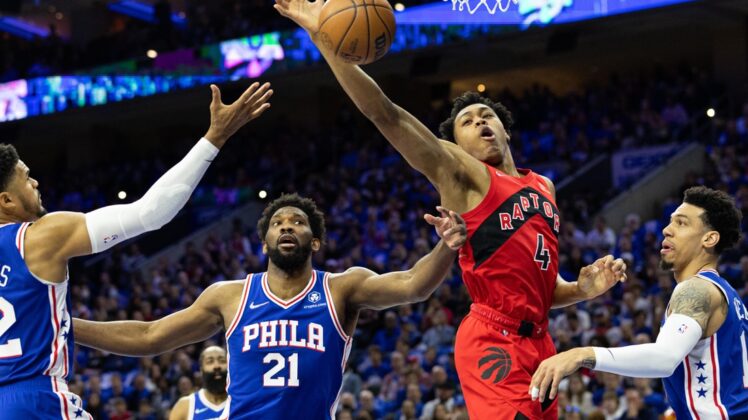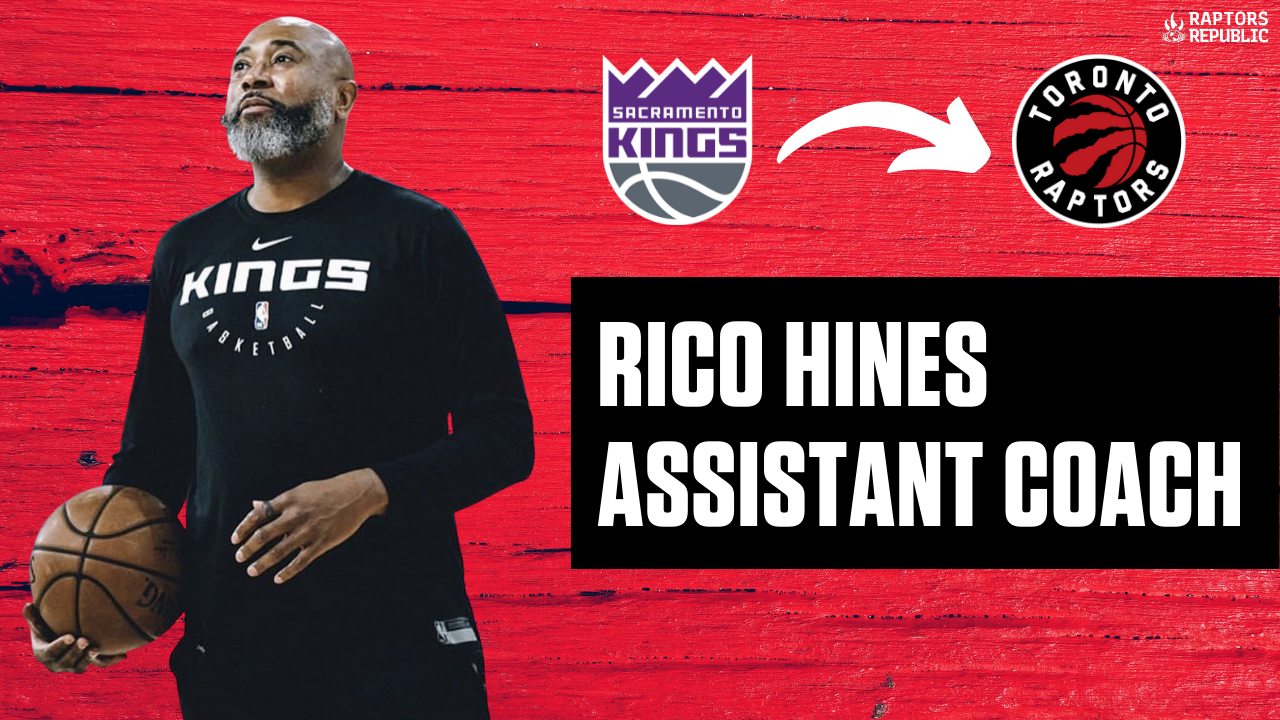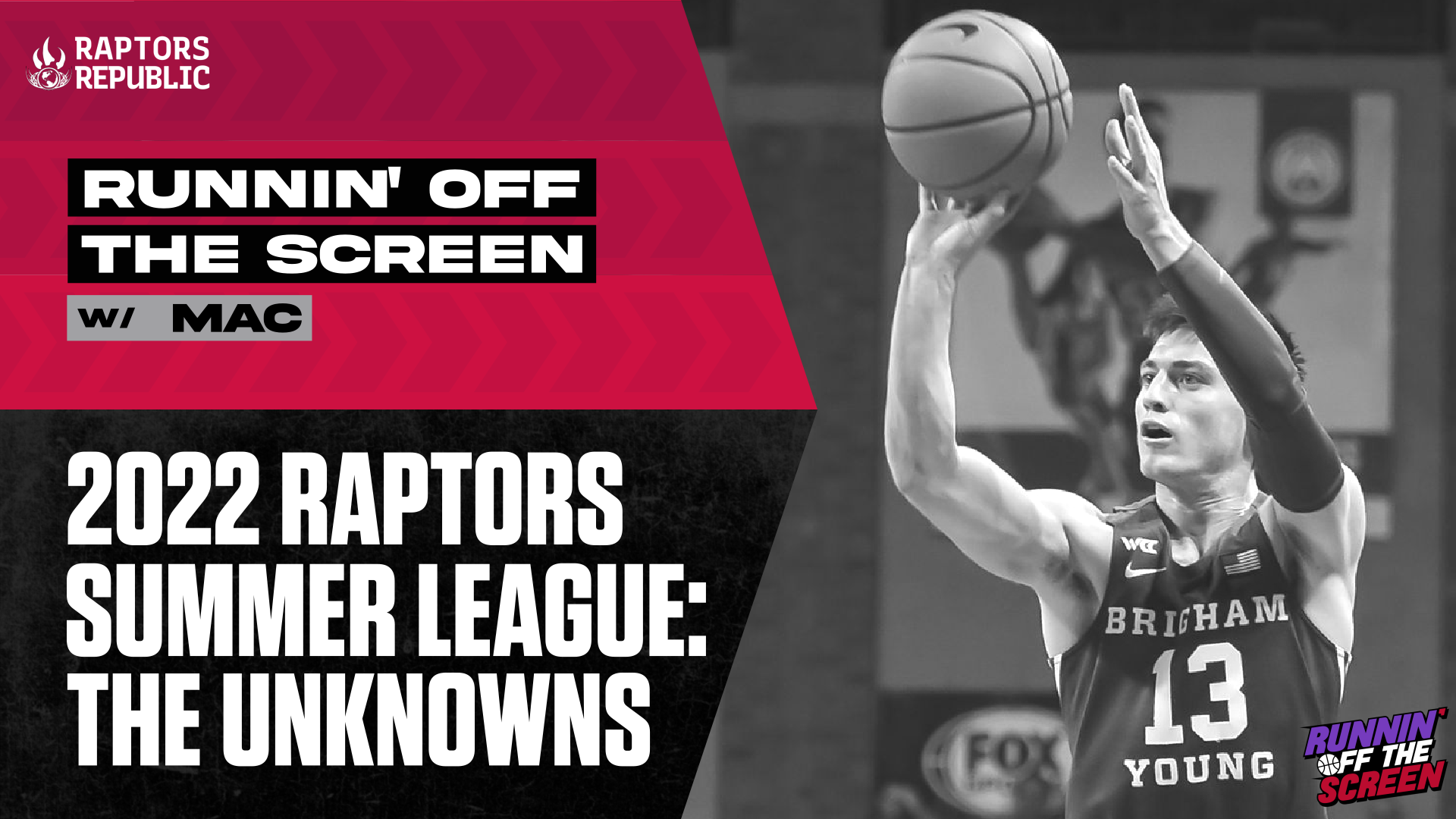Stillwater of the movie Almost Famous seemed to need disparate qualities in order to hit the big time. Russell Hammond thought they needed more complex music to better feature his guitar playing. Dick Roswell thought they also needed to feature Hammond — but more as a marketable frontman than a musician. Larry Fellows just wanted some barbecue. William Miller thought they were perfect just the way they were. (Until he met them.) It turned out, they just needed to get along. (Aww.)
Similarly, there are floating and disparate conceptions about how the Toronto Raptors need to improve as a basketball team. To a small extent, the Raptors needed to add a traditional big to the roster. Toronto may not need a center as much as people think. They had trouble protecting the rim last year, although they improved as the season aged, and the rim-protection-by-committee approach with Pascal Siakam, Chris Boucher, Scottie Barnes, OG Anunoby, and Precious Achiuwa all taking turns defending the most sensitive area of the court whenever others were in rotation or defending on the perimeter. That approach was solid enough that a traditional big was less necessary. Furthermore, Achiuwa’s development throughout the year as a defender of outrageous ability, both on the perimeter and in the paint, meant Toronto’s need for a center dwindled further. The Raptors probably do need to be able to play drop defense for at least a few minutes a game, but that’s not as high on the list of priorities as other additions. Toronto added Christian Koloko as a traditional shot blocker, 7-footer-who-thrives-in-drop big, and he is a good split-the-difference approach, with Toronto adding a player at least capable of playing in drop defense, but not requiring a huge number of minutes in the rotation to cramp Achiuwa’s development.
To a significantly larger extent, the Raptors needed to add shooting. They were a miserable shooting team last year, the 20th-most accurate in the league. Just as significant, their attempts per game fell to 19th — a huge drop for a team that had previously led the way in the analytics revolution behind the arc. And well over half of the team’s per-game attempts came from sharpshooters Fred VanVleet, OG Anunoby, and Gary Trent jr. On one hand, that meant those three — Anunoby especially — were less able to stretch their wings in the field of self creation than they would have liked. It also meant that though others, like Siakam, who were actually very solid spot-up shooters, weren’t able to get up many triples because they needed to initiate the offense with the shooters needed to be around the arc. The offense was, accordingly, inflexible. On another, simpler (but no less important) hand, the offense was cramped, with defenders crowding the paint on drives and forcing Siakam and others into much more difficult attempts at the rim than stars on teams with better shooting.
Adding Otto Porter jr. goes some way to addressing that issue. He’s a career 40 percent 3-point shooter, and he has no interest in doing much of anything else on the offensive end. Well, other than cutting — he’s a very good off-ball mover and excellent finisher at the rim, which pairs well with great shooting. Porter will be a play finisher for Toronto, and he won’t demand the ball or try to drive or do much of anything other than allow his star teammates to create for him. The Raptors have had a sore lack of players in that mold, and having spot-up shooters who don’t need the ball will allow Toronto’s three main shooters to diversify their games and play more inside the arc, as well as allow the star in Siakam more room to attack. If a few Raptors like Siakam or Barnes or Achiuwa improve as shooters, then the Raptors will bounce far back up in the 3-point rankings as a team. They won’t be the best, but they will no longer be near the worst. Porter and internal improvement isn’t a perfect fix, but it should be enough of a slapdash approach that the team will see benefits.
But the team has done nothing to address perhaps the biggest offensive weakness of all: rim pressure. Some damning stats: Last year, Toronto attempted the fifth-lowest frequency of shots at the rim. They were also the fifth-least accurate team at the rim. (They were the only team in the bottom five of both.) Toronto was the second-least efficient team scoring on drives. Toronto wasn’t much of a threat to score at the rim or from behind the arc, and those are two of the three most efficient areas of scoring in basketball. (The third, free throws, correlates strongly with rim pressure, and — surprise of all surprises — the Raptors had the sixth-lowest free throw rate in the league.) There are three pillars of good offense in modern basketball. The Raptors failed to create efficiently in any of the three.
As a result, the Raptors had to rely on relative gimmicks like transition play and offensive rebounding. Having to force turnovers on the defensive end in order to solidify their otherwise-squishy offense took a toll on Toronto’s ability to force misses on the other end, meaning they fouled more and gave up more layups and corner 3s. Having to crash the glass on the offensive end meant Toronto’s transition defense wasn’t as good as it could have been. The Raptors’ style came with some costs, and it’s arguable whether they did it from a position of strength — not enough teams tried to win the possession game — or from a position of weakness — they couldn’t win the normal way.
Good basketball flows from the inside out. Layups create 3s and free throws. Even Steph Curry and the Golden State Warriors, contrary to the stupidest talking points of the stupidest talking heads, are elite at scoring in the paint. And Toronto didn’t add any rim pressure to its team in the offseason. Though he shot an excellent 64.2 percent from 2-point range in college last year, Koloko likely won’t get enough minutes to address Toronto’s issues this season. Though Porter is extremely efficient at the rim, he doesn’t create a lick for himself within the arc. Toronto already has players extremely capable of finishing at the rim who score off of cuts and offensive rebounds — Boucher, especially, who re-signed this offseason. Porter will fit in there, offering similar qualities as does Boucher. But he’s not a driving threat and won’t help add a new element to Toronto’s ability to pressure the rim.
In fact, Toronto really only had one capable driver all year: Siakam. He drove 14.3 times per game and shot 52.8 percent on shots out of drives. Those are both excellent numbers that only five players reached last year: Siakam, Luka Doncic, Malcolm Brogdon, Donovan Mitchell, and DeMar DeRozan. But Siakam’s drives initiated a huge portion of Toronto’s offense last season. When he drives to force rotations from the defense and kicks the ball to open teammates, Toronto doesn’t have anyone capable of further attacking the rim from the other side of the court and consistently knifing through the rotating defense to score. VanVleet was second on the Raptors in drives per game and shot 40.2 percent out of drives. Anunoby was third and shot even worse, at 35.2 percent. He was the only player in the league last year to shoot so poorly on as high a frequency of drives. Trent was okay at driving, but he’s not a good finisher at the rim and usually settled for midrange pullups. Those aren’t a consistent source of easy points unless you’re Kevin Durant.
Porter won’t help Toronto as a second-side driver. Thad Young was very good, but he drove approximately once a game. The Raptors desperately need players capable of scoring easy and consistent points when Siakam gets into the heart of the defense. They didn’t add anyone who can. This has been a problem for some time now.
Toronto’s best hope is that Barnes takes a jump there. He drove almost five times a game last year and shot a solid 45.5 percent on drives. (Or Barnes becomes the guy forcing rotations with the ball in his hands and Siakam is able to attack rotating defenses — where he’d be perhaps the best secondary guy in the league at this point. But that’s probably still a few years away from making the most sense as Toronto’s orientation.) Achiuwa is a secondary hope, as he improved dramatically at driving throughout the season and was one of Toronto’s only rim threats in the playoffs. Either way, if the Raptors are going to take a leap on the offensive end, adding just shooting isn’t enough. They also need to add rim pressure. And barring a trade for a superstar, that improvement will have to come from within the roster. That’s a tall ask, but it’s a necessity if Toronto is going to take the next leap as a team into the tier of contenders. Stillwater made the cover of Rolling Stone. Toronto can follow in their footsteps, but it needs to know what improvements are most important to prioritize. The Raptors have the offensive structure already in place to build advantages. Now they just need to learn how to convert them.



